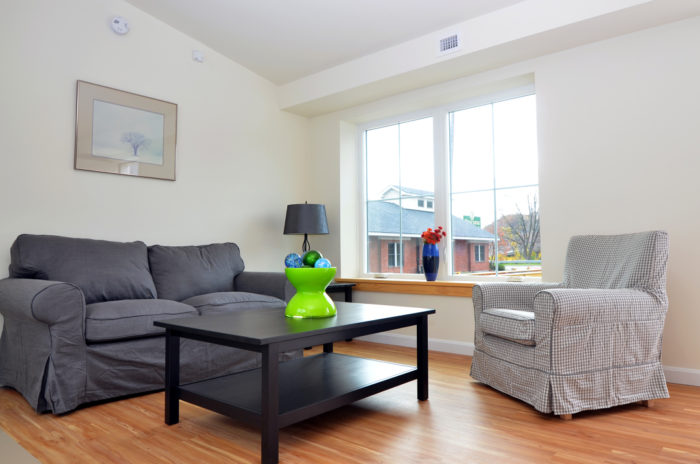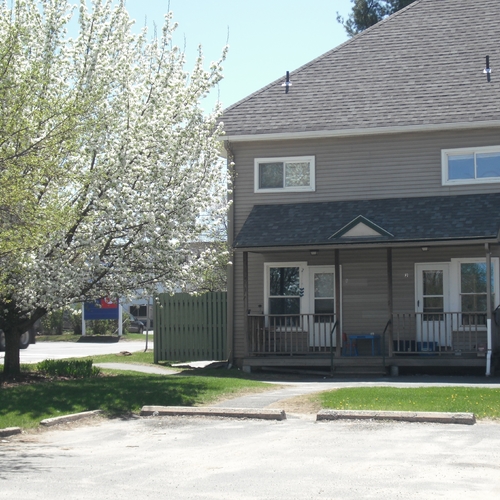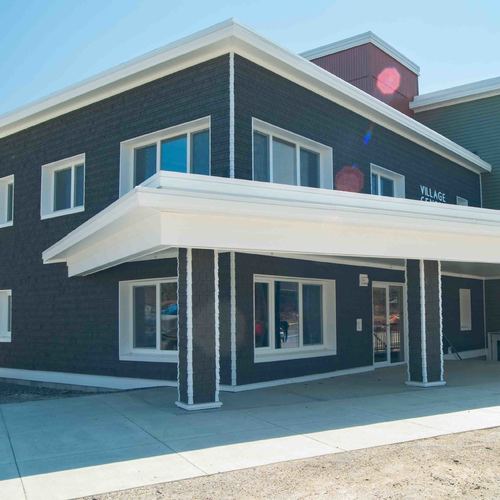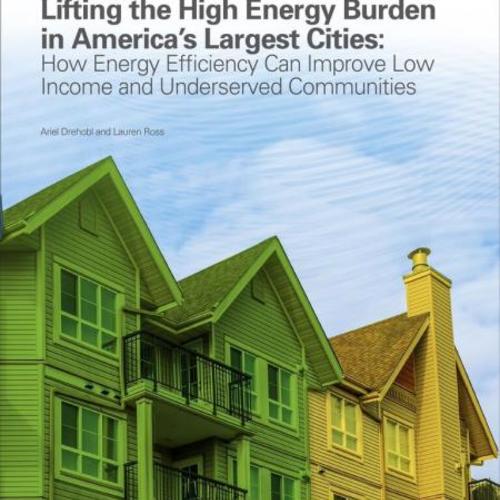
Image Credit: Manufactured Housing Innovation Project
Finding ways to make housing affordable has troubled society for decades. Lack of affordable housing is linked to a host of social issues, including underemployment, drug abuse, domestic violence, and poor health.
Affordability is defined as spending no more than 30% of monthly household income on rent or mortgage payments. According to the U.S. Department of Housing and Urban Development, “40.9 million American households (35.3%) are cost burdened, including 19.8 million (17.1%) with severe burdens, meaning they spend over half of their income for housing.” Spending so much on rent leaves little for life’s necessities, like food, clothing, education, healthcare, electricity and other utilities.
Paying the rent or a mortgage is far from being a family’s only expense. Just because their income is low doesn’t mean it costs any less to keep the milk refrigerated, fend off the cold of winter or keep the water running. Energy costs the same for everyone, making the energy burden up to three times heavier for low-income families than families with higher monthly incomes, resulting in what is called “energy poverty.” Energy poverty is determined by the percentage of income that a household spends on energy. While an average family may spend about 3 percent of their income on energy, low-income families may spend more than 20 percent of their income on energy expenses.
Energy poverty makes housing even more unaffordable. So one way to address the problem is to reduce some of the fastest rising costs to occupants — energy and water expenses — thus reducing the toll that energy poverty takes on low-income families.
Many energy utilities already address affordability through assistance programs that pay a portion of customers’ bills when customers can’t cover the cost themselves. While financial assistance with bills is a short-term fix, it does little to solve the long-term underlying problem.
Reducing waste, adding solar would help
Addressing high utility costs by reducing the staggering amount of energy and water waste that occurs in many low-income homes is an essential part of fixing this serious societal problem. There are income-qualified weatherization programs in virtually every community whose goal is to tighten up the homes of those who can’t otherwise afford it. These are operated by energy utilities, native nations, government agencies and nonprofit organizations.
Weatherization assistance programs install energy conservation measures such as insulation, air sealing, low-flow shower heads, LED lights, etc. These programs are often constrained by inadequate budgets and narrow definitions of cost effectiveness. While they certainly help, these efforts often fall far short of the ideal. There are isolated cases of extensive weatherization, sometimes called “deep energy retrofits,” that bring energy use to extremely low levels. Unfortunately, deep energy retrofit programs for low-income homes are usually limited to demonstrations and not widely available.
Another approach is to reduce energy costs by adding solar (photovoltaic) panels. Solar panels are becoming part of the efficiency package in working class neighborhoods around the country. These efforts are often coupled with previous weatherization work. In order to further improve economic prosperity for low-income families, one California-based nonprofit adds job-training to the mix. GRID Alternatives installs solar energy systems in underserved communities while preparing workers for family-wage jobs in the clean energy industry. They have installed more than 9,000 photovoltaic systems and trained nearly 35,000 people.
Programs help, but aren’t enough
While all of these efforts do contribute to the overall solution of the problem of energy poverty in some way, they also all miss a huge opportunity. Funding and implementation are fragmented across many organizations. Efficiency measures are implemented piecemeal. It’s a rearguard action that succeeds only to address the biggest needs and fails to reach the level of efficiency demanded by the current climate crisis. Limited funds and insurmountable backlogs lead to a form of housing triage by treating only the worst cases. It’s a poor investment of public resources.
Currently, a great deal of funding is going towards patching substandard homes or paying high utility bills, or both. There is a better way. These funds could be repurposed to systematically weatherize the existing good quality apartment house and home stock using programs such as EnergiSprong for apartments and deep energy retrofits for stand alone homes. Approaching energy retrofitting in this systematic way will be far more cost effective for society and more dignified for the occupants of these homes and apartments than the current piecemeal approach.
And rather than attempting to weatherize unfixable homes, combining funds currently directed towards utility bill assistance, repair and weatherization of existing homes and apartments with the funds for incentivizing new construction would support the replacement of older, deteriorating homes with brand new homes that are healthier and more energy-efficient.
Don’t repair, replace
There are many homes that are simply beyond help and weatherizing them would be a poor investment. In these cases, there lies a golden opportunity to make an even greater impact. Instead of patching them up, replace them with brand new, zero-energy homes and apartments.
This initiative could be funded by combining the multiple sources of assistance already targeted for low-income families, including utility bill assistance, low-income weatherization grants and loans, and incentives for energy-efficient new construction. The energy savings enjoyed by the occupants of these new homes will make the houses more affordable and would increase the ability of occupants to contribute to the upgrade cost.
It’s an approach not unlike the very successful “cash for clunkers” program that removed millions of old, polluting cars from the road and replaced them with more efficient models and, at the same time, created significant economic activity. A similar approach would work for the affordable housing market. Instead of throwing good money after bad, help disadvantaged families rent or buy homes that will save them money and restore their dignity. This approach represents a “hand up” rather than a “hand out” and requires a significant contribution from the beneficiaries in the same way that Habitat for Humanity requires homeowners to invest effort into their homes.
This is where zero energy comes in, because it’s more cost-effective to apply zero energy principles in new construction than in retrofits. These new homes should be affordable and qualify as zero-energy ready. Zero-energy ready means the building envelope and equipment are built to zero-energy standards, so that it is possible to supply all the energy the home needs with the addition of an on-site renewable energy system, usually solar panels.
And it’s possible to build a zero-energy ready home for less than the cost of a conventional home. The key is small size, careful design, efficient construction, thrifty procurement, and well-structured financial support. While these elements have not historically been the strong suit of the American homebuilding industry, the factory-built home sector shines in all four areas.
Better housing is becoming available
HUD-code manufactured homes fall far short of basic energy codes when compared to site-built homes. However, efforts are being made to improve efficiency. The first zero-energy ready manufactured home recently rolled off the line in Alabama. This home slashes energy use in half compared to HUD-code homes and shows that it’s possible to build zero energy HUD-code manufactured homes.
Modular homes, as distinct from manufactured homes, can yield both greater affordability and zero energy efficiency to low-income families. Modular homes are also made in factories, but must meet the building code of the jurisdiction in which they are placed. Modulars do not have their own wheels. They are generally transported on flatbed trucks and lifted into place with cranes. Many modular home builders already offer zero energy models.
New players also have entered the market with entire product lines dedicated to zero energy. Using many of the same techniques as the most efficient site-built homes, ZeMod Delaware and VerMod Homes offer homes complete with solar panels that cost less to own the very first month than similarly sized manufactured homes. This is made possible by a combination of construction efficiencies, incentives, financing, and energy savings.
Zero-energy modular homes can solve several problems at once. They improve health and affordability for people across a greater range of the income spectrum. In the process, jobs are created and local economies grow. Public and private funding will be more effectively employed, and more and more families will be able to stand on their own feet. And, importantly for everyone, regardless of economic status, the costs of coping with climate change will be reduced. Everyone wins.
This post originally was posted at Zero Energy Project.
Weekly Newsletter
Get building science and energy efficiency advice, plus special offers, in your inbox.















0 Comments
Log in or create an account to post a comment.
Sign up Log in